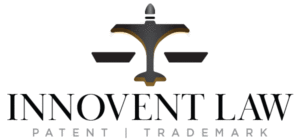Patent Costs Misconception
Many inventors and small businesses are afraid to patent their work because they think it will cost them hundreds of thousands of dollars. This misconception comes from high-profile litigation cases where legal fees and damages can go up to millions: think Apple v. Samsung or the latest Oracle v. Google. Getting a patent carries a different cost than enforcing and litigating a patent, these cases are not the norm. Patent protection is still the best way to protect your invention, and there are various patent strategies to help you protect your work while you’re growing your business. In this article, I discuss how much do patents cost to prosecute and obtain a patent, as well as the maintenance fees involved.
Obtaining a patent is a business decision, and you must be mindful of it until you begin sharing the idea with the public. You have 12 months from the day you put your invention on the market to begin filing for a patent on it. After those 12 months, you are barred from getting a patent on that invention.
To know the difference between design and utility patent, check out our video here.
Design Patent Costs
If what you need is a design patent this patent cost is cheaper than a utility patent application, what you’re covering or what you’re protecting is the ornamental design, look and feel of your invention.
Design patent cost tends to be around $2,000 to $3,000 including drawings. Most people or most businesses are within small entities The government filing fees are between $255 if you are a micro entity and double that amount to $500 if you’re a small entity. Once you get a notice of allowance, and your patent is approved, you have to pay the issue fee for the patent. The issue fee for the design patent if you’re a small entity is $370.
And the great thing about design patents is there are no maintenance fees. So you’re looking at a total of around $3,000 to $3,500 for everything, including drawings for something that is good for 15 years.
Utility Patent Costs
Utility applications tend to be a little bit more involved and are pricier, but they afford broader protection. For utility patent applications I typically recommend starting with a search, depending on the complexity of the invention. You’re looking at anywhere from $2,000 to $3,000 for a search. Some firms might do them for cheaper. Some firms might do them for more than that.
If your invention is ready for a non-provisional application, the legal fees for those vary between $5,000 and $10,000, depending on the firms and depending on the complexity of your invention. The government filing fees are $760 for the non-provisional application. On average, expect to get 1 to 2 office action or rejections from the patent office.
And you should budget anywhere between $1,500 and $2,000 for each one of those rejections. On average, $3,000 added to that expense for rejections or office actions responses which will come due in about 2 years from the time you file your utility application.
You will get a notice of allowance and you’ll have to pay an issue fee once your patent is allowed. The utility patent issue fee for small entities is $600.
One thing to know about utility non-provisional patent applications is you also have maintenance fees which are due at 3 years,7 and a half years, and 11 and a half years. Currently in 2020, assuming you are a small entity, those fees are :
$1,000 for the 3 years,
$2,000 for the 7 and a half years
$4,000 for the 11 and a half years
If you do not pay these maintenance fees when they come due, your payment could be abandoned.
Not ready to pay the non-provisional utility patent application fees but you want the utility patent? One great alternative is the provisional patent application.
Provisional Patent Application
What a provisional patent application will do is give you a priority date. And you have 12 months from the time of filing the provisional application to convert it to a non-provisional application. It is Depending on the firms and depending on the complexity of your application. The patent costs will be from $2,000 to $4,000 typically for provisional patent applications. Government filing fees are $150 for those. Most of the firms will use the work they do for the non-provisional towards the provisional application. Assuming, not all law has changed from your provisional to the non-provisional, you will get credit for the legal fees. This is from what you paid for the provisional towards your non-provisional application.
Interested in learning more about how to secure your intellectual property?
Schedule a free discovery call with our team today.
Innovent Law helps innovators protect, maintain and defend patent, trademark, copyright, and other intellectual property rights in the United States and around the world.
